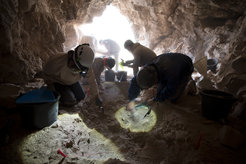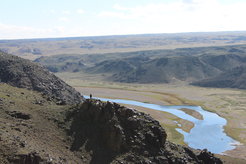Mongolian Cave and Palaeolake Project
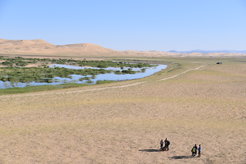
Our project the Mongolian Cave and Palaeolake Project aims to examine the Pleistocene dispersals and adaptations of the early people of Mongolia. These hunter-gatherers communities would have been largely reliant on fresh water sources and the local wildlife. At certain periods they would have had to traverse across significant environmental barriers and corridors as they wandered across Eurasia.
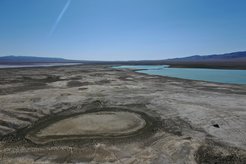
Our interdisciplinary team is surveying for archaeological sites to better understand human adaptations to fluctuating environments. Mongolia currently experiences significant sediment erosion (deflation), which often alters the integrity of archaeological sites. In our attempt to find intact archaeological sites, we targeted caves and palaeolake deposits throughout the Gobi-Altai Mountains. Neither had been thoroughly documented in the region and our surveys sought to remedy that.
In partnership with the National Museum of Mongolia, and various international colleagues, the first season of fieldwork in 2018 surveyed four different cave regions throughout the Gobi-Altai, with the discovery and recording of 30 caves. Many of these lacked sediments on their floors, but those that didn’t were excavated with their finds recorded and collected. Additionally, 8 different palaeolake deposits were found together with archaeological remains from the Late Pleistocene until the medieval period.
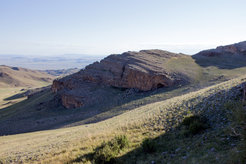
Our second expedition in 2019 has just returned from more extensive surveys of the palaeolakes identified last year. Both seasons recovered large amounts of palaeoclimatic data and archaeological material, which we hope will provide a richer understanding of Mongolia’s archaeological and environmental past.
Click here to view our publications!
